We may earn commissions when you buy from links on our site. Why you can trust us.
Beat Seasonal Depression with Light Therapy
For many people, wintertime can mean feeling tired despite a full night’s sleep, craving sweets and carbohydrates or getting moody over things that typically don’t bother them. When symptoms are more intense, this seasonal syndrome may be diagnosed by a doctor as Seasonal Affective Disorder (SAD).
The likely culprit behind both winter blues and SAD is a decrease in the amount of sunlight you’re getting. The change disrupts your internal body clock, leaving you feeling blah.
Now, light therapy has joined exercise and getting outside as much as possible during the day on the list of ways to fight this wintertime problem. Light therapy can also aid those who do shift-work or experience jet lag. Light therapy products include desk lamps, floor lamps, light boxes, dawn simulators, special light bulbs and even lighted visors.
The idea behind light therapy, also known as phototherapy or bright light therapy, is fairly simple. Exposure to special indoor lights that emit full-spectrum light that mimics sunshine activates certain chemicals in your brain, researchers believe, that play a role in mood regulation. The light also helps adjust your body’s circadian or 24-hour body-clock rhythms.
In an interview with Alfred Lewy, M.D., PhD and professor emeritus of psychiatry at Oregon Health & Science University (OHSU), he explains that although natural sunlight is usually best at keeping the blues at bay, during the shortest days around the winter solstice, you may need to augment that with technology. He says for most people, morning is the most important time to get that light exposure.
As interest in the field of light therapy grows, so does the number of available products. Because most lights and light boxes don’t require approval or regulation by the Food and Drug Administration (FDA), it’s important to understand the options before you make a purchase.
Many lights emit white light, sometimes with a warmer yellow or cooler bluish glow. Some ophthalmologists warn that too much blue light could cause retina damage. Although research has not confirmed that claim, we’re holding off recommending any products that emit concentrated blue light.
Light therapy for winter blues
If the shorter days near the end of the year leave you feeling a mild case of the winter woes, sunlight simulators can help put some pep back in your step. These devices are basically alarm clocks that start off with a gradual light that increases in intensity — kind of like a miniature sunrise. Plenty of people use these bulbs just because they find them a more pleasant way to wake up all year long!
Philips Wake-Up Light With Sunrise Simulation
Philips’ Somneo Sunrise Wake Up and Sleep Therapy LIght uses LED light to create a colored sunrise simulation. The “sunrise,” which is a slow change from red to orange to yellow light, can be timed to take between 20 and 40 minutes. At night, a dusk simulation can help you doze off. The Wake-Up Light can also act as a bedside lamp, with 25 different brightness settings up to 320 lux. The light has two alarms, tap-to-snooze, seven different wake-up sounds, an FM radio and USB port to charge your phone. This full-featured best-seller has everything we'd recommend in a wake-up light, it's beautifully designed and it gets 4.2 stars on Amazon.
Price: $160 at Amazon
Philips Hue White and Color Ambiance A19 Starter Kit
You can turn a regular lamp into a therapy light with Philips Hue White and Color Ambiance smart bulbs. The bulbs, each controllable by your smartphone or tablet — work with a bridge that also makes them controllable by Amazon's Alexa-enabled products.
Program the bulbs the change the color of white light they produce depending on the time of day—morning (blue-toned, around 6000K), midday (bright white, around 5000) and evening light (orange-toned, around 2700K)—in order to help synchronize your body’s circadian rhythms. The color “temperature” helps regulate your body’s production of melatonin, the hormone that helps your body maintain its circadian rhythm and plays a key role regulating when you fall asleep and wake up.
Price: $46 on Amazon for 3 bulbs and a bridge
Light therapy for Seasonal Affective Disorder (SAD)
For some people, seasonal doldrums may be much more intense and actually be symptoms of Seasonal Affective Disorder or SAD, a type of depression related to changes in seasons. According to the Mayo Clinic, SAD may include fatigue, irritability, moodiness, significant weight gain or the need for more sleep.
If you suffer from SAD, you too may benefit from light therapy. Time spent with a light box (a metal frame holding fluorescent tubes) is one of the most common treatment recommendations. Most people use light boxes for a minimum of 30 minutes each morning.
Note: If you think you may be suffering from SAD, please seek professional medical help. While treatments for SAD often include light therapy as a first-line of treatment, psychotherapy, medicine or a combination of treatments may also be recommended by your doctor.
If you’re looking for a light box to treat SAD, consider what type of device might work best for you.
- Some light therapy products look like traditional lamps (upright, desk or floor style). Many products are smaller and more portable. Mayo Clinic recommendations say most light boxes need to be within about two feet of you to work most effectively.
- Brighter lights may require less time to use each day, but it’s important to find a light or light box that provides the right intensity of light at a comfortable distance — so be sure to talk to your doctor. “The manufacturer should have calibrated the distance between your eyes and the fixture to achieve about 10,000 lux, but no more,” Dr. Lewy said. If you do have SAD, you’ll want to look for labeling on the product or manufacturer’s information/user guide accompanying the product that shows it’s been designed to treat SAD.
- Light therapy lamps or boxes designed to treat skin disorders or other problems may emit higher levels of ultraviolet (UV) light and could damage your eyes if used incorrectly. Ideally, you should be looking for lights that filter out much of or all of the UV light.
- Many doctors recommend fluorescent bulbs for SAD light therapy because incandescent lights can get hot. And while the doctors we spoke with said they’re not against LED’s being used, they also noted it’s still a fairly new choice, so there’s no long-term research. Look for a product with a Plexiglas diffuser or diffuser lens.
Products to combat SAD
Your doctor may advise you to invest in a larger light box to provide the maximum exposure to bright-light therapy. While larger light boxes typically cost more, they also should last many years. Contact your insurance company to see if they may cover a portion of the cost if you have a doctor’s prescription.
Best for at home: Alaska Northern Lights NorthStar 10,000
This broad-spectrum light box is a bestseller, having been on the market (albeit updated) for 21 years. It stands both horizontally and vertically and is 10,000 lux at a distance of 24 inches. It weighs 10 pounds and measures 12.5 inches tall by 22.5L inches wide by 4.5 inches deep. The box has a handle for carrying it from place to place. A reflective mirror finish spreads the light evenly across the sub-surface of its diffuser, helping eliminate harsh glare. This light box comes with a 60-day trial and a full money-back guarantee and a lifetime warranty to the original owner. What sets this light apart is the fact that you can place this light at up to two feet away (most lights require you to sit within 8-12 inches) and it has a handy carrying handle.
Price: $300 on sale from Alaska Northern Lights or Amazon
Best for travel: Sphere Gadget Technologies Lightphoria, 10,000 Lux Energy Light Lamp
This lamp contains 72 “eye-optimized” LED lights adding up to 10,000 lux of broad-spectrum white light at 12 inches. The compact design is easy to pack up for travel and offers a tilt-back stand. The LED bulbs do not emit heat, and the device has a programmable timer and different intensity settings. A nylon travel pouch is included with the purchase as well as a 110v/240v worldwide-compatible AC adapter. We are impressed by this light's compact size and travel accessories.
Price: $55 at Amazon
Updated on 2/6/2018 with new product picks
[Image credits: sad woman looking out window via Shutterstock, Philips, Alaska Northern, Sphere Gadget Technologies]
Discussion 
In conjunction with the blue light boxes, I recommend reducing excess blue light /w filters on your iPhone or computer. This has definitely helped me manage my circadian rhythm and increased my sleep quality.
I often get sadder during the winter, so thanks for sharing this. I like your point about how lights can help with your mood. I might need to fill my house with warm lights so I can adjust.

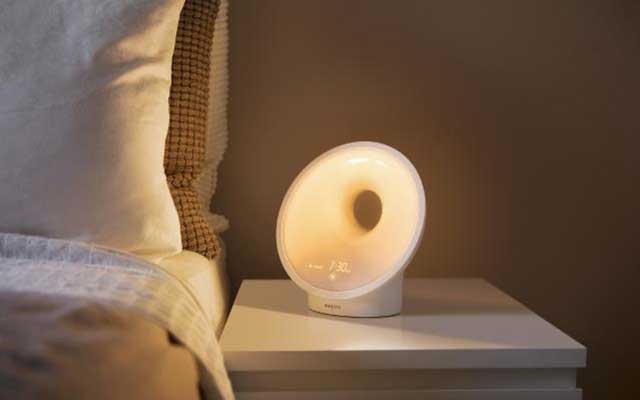
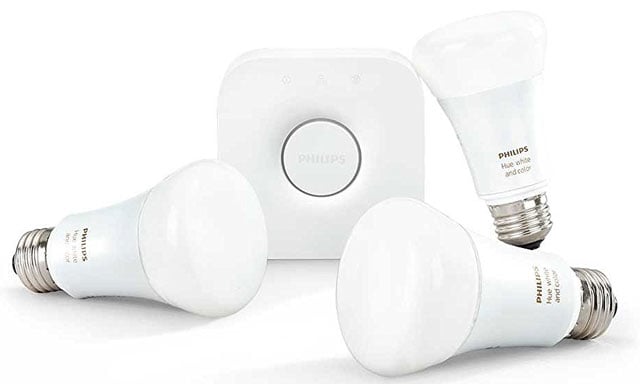
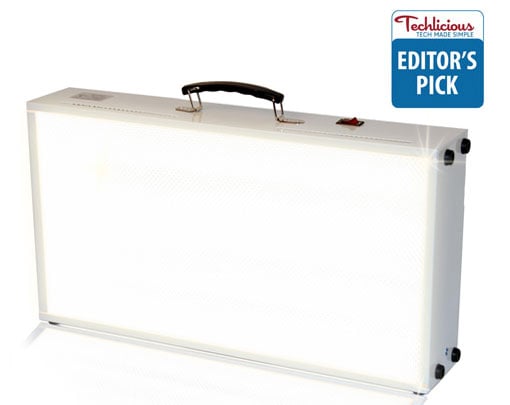
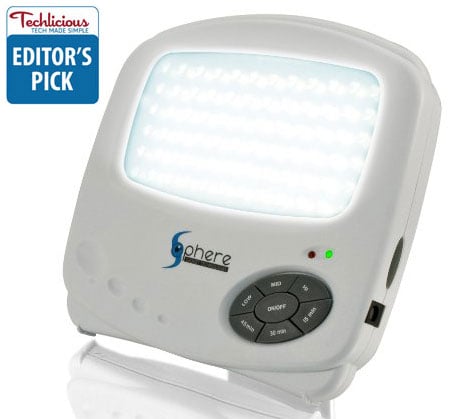







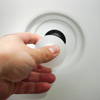






From Henry C on December 18, 2015 :: 12:44 pm
Very interesting. Very informative. Always nice to have a little help during those long winter months.
Reply